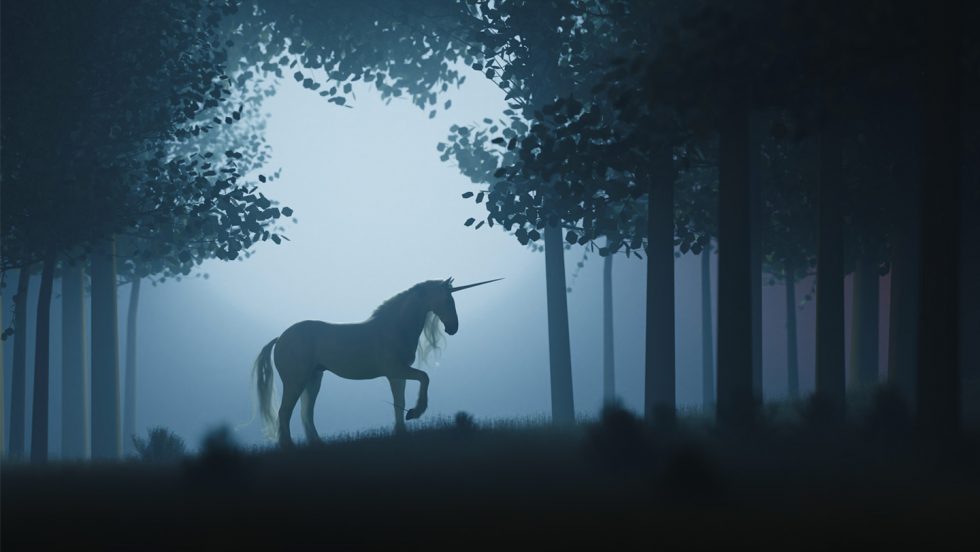
The inspiration for the essay “Magical Aesthetics of Unicorns in Girlhood Visual Culture” by Courtney Weida, EdD, associate professor in the Ruth S. Ammon School of Education, published in the journal Visual Culture & Gender, can be traced back to a room of young girls equipped with sparkling glitter, brightly colored markers, smooth glass stones and stacks of construction paper on a Saturday morning.
Dr. Weida and her colleague, Carlee Bradbury, PhD, professor of art at Radford University, created the workshop these girls attended through Harvard University’s Ed Portal, a collaborative community center, to celebrate and share their affection for fairy tales and their illustrations. While the pair intentionally named the workshop “Treasures and Tales” to have a unisex appeal, all attendees that morning were girls—presenting an opportunity to examine how girls in particular relate to the stories and art of fairy tales.
As Dr. Weida and Dr. Bradbury launched into their teaching and creative projects, which centered on a variety of fairy tale characters and stories—from princesses, dragons and knights to wizards, witches and mermaids—it soon became clear that the young girls had gravitated toward a particular magical focus: the unicorn.
“My colleague and I thought the students would be more interested in princesses or wizards or humanoid fantasy characters, but the children kept returning to unicorns—through their selections of stories they knew or created in discussion, as well as their studio activities,” said Dr. Weida. “For example, the unicorn accompanied a princess in some of their stories, with the unicorn adding a context or aesthetic of magic. We began to notice during the workshop that many children seem to ‘age out’ of interest in princesses and move on to unicorns.”
The girls’ fascination with unicorns raised some scholarly questions for Dr. Weida and Dr. Bradbury—questions about symbols, gender identity and diversity, all of which formed the basis for the research they would examine in their essay.
Dr. Weida said that going beyond the stereotypical “whiteness” of princesses and Western unicorns has been an evolving process and that it may be important to remember that even if a unicorn looks very mainstream or appears as a form of schema for mostly Western images, the meaning of unicorns for young people can be more complex.
“Horses can represent elements of freedom, rebellion and movement for young girls and reflect their visions of self in growing up. We also see horses and unicorns in surrealist art of adults, showing their evolving meaning,” she says.
In their essay, the professors share the workshop participants’ reactions and art-making processes, while exploring unicorns within cultural frameworks and in art history. They note the vast diversity of unicorn imagery in popular culture, from the medieval, treasure-like aesthetic to the more modern version adorned with glitter and rainbows, and that this diversity could also be seen in the girls’ artwork.
“We were fascinated by the references students had coming into the workshops and those that resonated with them from art history imagery we shared,” says Dr. Weida. “There was a pervasive sense of nostalgia about unicorns, as children have access to and knowledge of contemporary media as well as materials from before they were born. They were very comfortable switching between genres and in collaging very different ideas together.”
Dr. Weida and her colleague also delve into the history of the unicorn as a symbol of magic and transformation. They share that while Western and white images of unicorns may come to mind from popular media, the unicorn is present in art from across cultures and time, in many forms of art media and literature.
Because of this versatility—from bronze Ethiopian unicorn statues to the Unicorn Tapestries of the Middle Ages and chimera unicorn creatures in New York City’s Morgan Library Workshop Bestiary to Audre Lorde’s The Black Unicorn: Poems (Norton 1995)—art educators can tap into unicorns as a captivating resource to utilize in their curricula.
The professors also cite educational philosopher Maxine Greene, PhD’s references to unicorns in children’s artwork as “images of possibility” and her encouragement of teachers to cultivate both perception and imagination in students. As they witnessed the workshop participants’ displays of enthusiasm and creativity, Dr. Greene’s words resonated with them.
“Unicorns can be a really powerful symbol for young people, perhaps especially for girls and nonbinary children,” said Dr. Weida. “They can be incredibly sweet or majestic, they can transcend gender, and are also often associated with healing.”
She added, “Unicorns might be a particularly useful representation of both creativity and hope right now.”